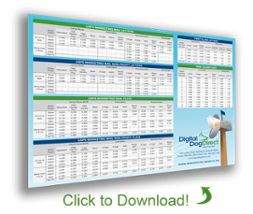 If the financial services industry is any indication, direct mail is not only gaining strength among marketers, but also working well across various age groups.
If the financial services industry is any indication, direct mail is not only gaining strength among marketers, but also working well across various age groups.
Recent information uncovered by direct marketing research firm Competiscan shows that “direct mail outreach by the financial services sector to Millennials grew faster than to any other age group from 2010 to 2014.”
As for seniors, direct mail is the #1 influencer for choosing Medicare insurance plans. Half of seniors take the time to read direct mail from insurers and one-in-four will read mailers even if they are not shopping for insurance.
The fact that direct mail is a viable marketing channel for multiple generations of financial services customers is not lost on many players in the field:
- Ascentium Capital reports “direct mail is over seven times more effective than all digital channels combined.”
- The Financial Brand notes that among the top mailers in 2012, were: #1 JP Morgan Chase, #2 Citigroup, #5 Discover, #6 Mutual of Omaha, and #16 Geico.
- Financial Advisor IQ notes that James Lange, president of Lange Investment Group, relies on direct mail to fill workshops for clients and prospects, which bring in 40% of new assets to his firm’s $300+ million fund.
- Advisor Analyst states that studies have proven time and again that direct mail is effective and delivers a high return on investment.
Regarding why direct mail continues to drive leads and sales in financial services, a recurring theory is that hard copy letters and brochures provide a higher level of credibility to financial offers vs. email or digital ads.
In an article published by National Mortgage Professional Magazine, “Millennials Prefer Direct Mail,” the author states that, “A physical, tangible piece of mail conveys a sense of legitimacy…and generates an emotional reaction in the recipient.” Another publisher, Advisor Perspectives points to the fact that direct mail “reaches people directly in their homes and provides physical documents that recipients can save and refer to later.”
Many other factors add up to generating a positive ROI for banks, credit cards, investment firms, and insurance companies using direct mail. It has high open and readership rates. It also has a high recall rate. And direct mail can be highly personalized to the recipient including the use of variable data-driven copy and images.
But perhaps Marc Prosser, co-founder of FitBiz Loans, sums it up best in one word: Targeting. “On the consumer loan side of things,” he writes, “direct mail allows you to target based on a wide variety of variables including geographic location, credit history, household income, and more.” Age and gender are two others that can also impact response.
Across the consumer financial services sector, it appears that direct mail is making good financial sense for customer acquisition and retention efforts. You can affordably determine if it makes sense for your services by conducting a test mailing and measuring results.



Comments